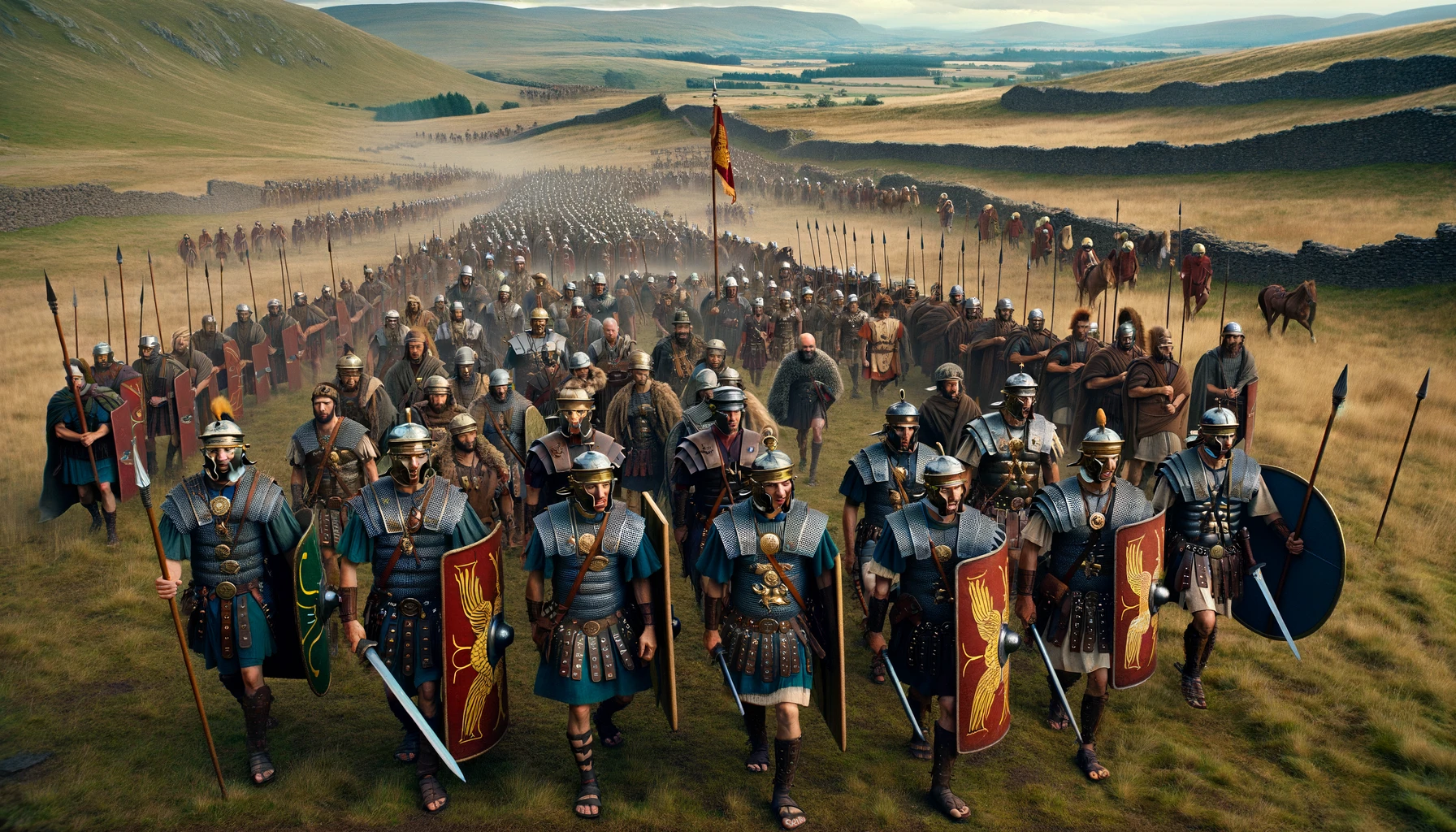Quintus Lollius Urbicus assumed the position of governor of Roman Britain in 138 under the reign of the new emperor Antoninus Pius. Urbicus hailed from a lineage rooted in North Africa, being the son of a Libyan landowner and a native of Numidia (modern Algeria). Before his tenure in Britain, he distinguished himself in the suppression of the Jewish Rebellion (132–135) and later governed Germania Inferior.
Antoninus Pius departed from the containment policy set by his predecessor Hadrian, prompting Urbicus to initiate the reconquest of Lowland Scotland by advancing northward. Between 139 and 140, he oversaw the reconstruction of the fort at Corbridge, and by 142 or 143, coins commemorating a victory in Britain were minted. It is plausible that Urbicus led the reoccupation of southern Scotland around 141, likely deploying the 2nd Augustan Legion. He engaged in campaigns against various British tribes, including potentially factions of the northern Brigantes, the lowland tribes of Scotland such as the Votadini and Selgovae in the Scottish Borders region, and the Damnonii of Strathclyde. His military force likely numbered around 16,500 men.
Urbicus likely strategized his campaign from Corbridge, advancing northward and establishing garrison forts at High Rochester in Northumberland and possibly Trimontium as he pushed towards the Firth of Forth. With an established supply route along Dere Street, he likely established a supply port at Carriden before confronting the Damnonii, achieving rapid success.
Following the completion of the Antonine Wall’s defenses, Urbicus turned his attention to the fourth lowland Scottish tribe, the Novantae, residing in the Dumfries and Galloway peninsula. The Antonine Wall served multiple purposes, including defense against the Caledonians, isolating the Maeatae from their Caledonian allies, creating a buffer zone north of Hadrian’s Wall, and facilitating troop movements and trade control. Urbicus achieved significant military victories, but like those of Agricola before him, they proved short-lived. Despite twelve years of construction, the wall was eventually overrun and abandoned shortly after AD 160.
The destruction of some southern brochs may be attributed to the Antonine advance, as they potentially lost their significance as symbols of Roman patronage and strategic importance from a Roman perspective.
It has been mooted that the string of Agricolan forts and stations along the Gask Ridge may have been re-commissioned, the rich lands of the southern Venicones tribe annexed once more, and tribute therefrom levied in the form of foodstuffs, used to supplement the diet of the Wall’s garrison.
